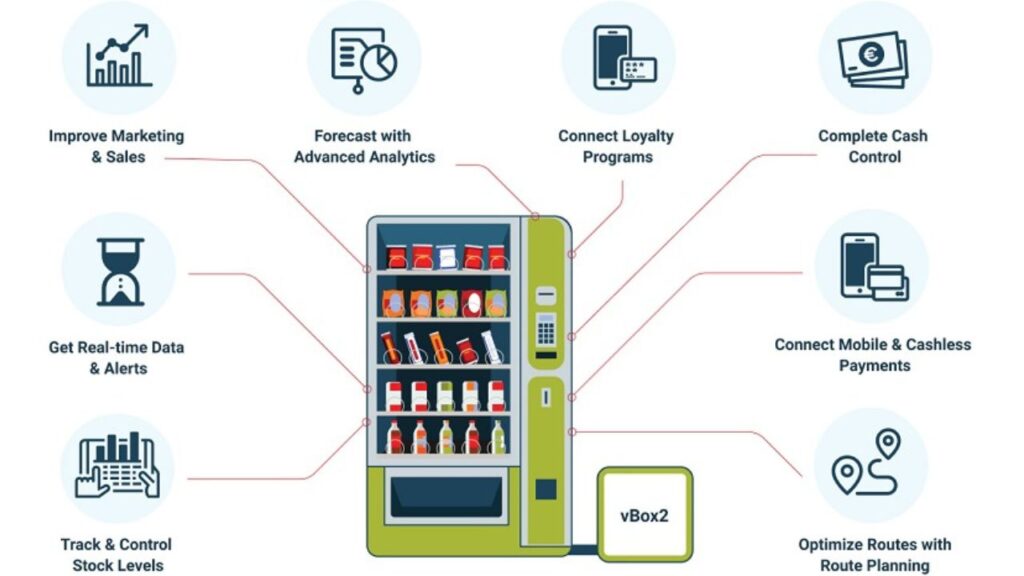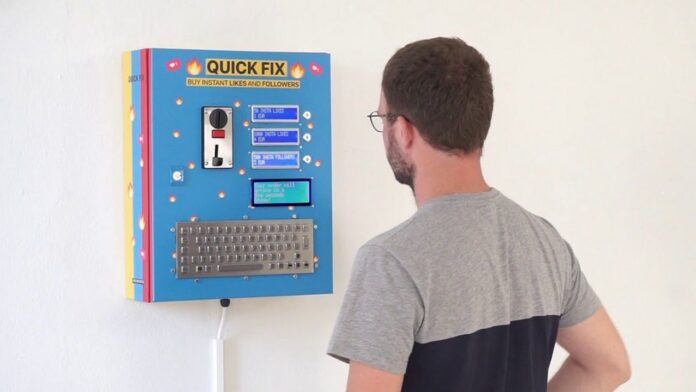How to Fix Vending Machines Fixing a vending machine involves troubleshooting common issues like coin jams, product jams, and card reader errors. Solutions include clearing obstructions, cleaning components, and checking electrical connections. Regular maintenance and understanding of error codes contribute to effective repairs, ensuring uninterrupted service and customer satisfaction.
Identifying Common Vending Machine Issues
Common vending machine issues include power problems, coin or bill jams, product jams, and display malfunctions. Power issues can stem from faulty outlets or wiring. Coin and bill jams often result from debris or misalignment.
Product jams occur due to obstructions in the dispensing mechanism. Display malfunctions might indicate electrical or software issues. Regularly cleaning and inspecting components, such as acceptors and motors, can prevent many of these problems.
Tools Needed for Vending Machine Repair
Tools needed for vending machine repair include a multimeter for electrical testing, screwdrivers (Phillips and flathead) for accessing components, pliers for handling small parts, a flashlight for visibility, and a cleaning kit (cloth, compressed air) to remove debris. Additionally, having a set of replacement parts (fuses, motors, and belts) and the machine’s manual for reference can be invaluable. These tools help diagnose and fix common issues efficiently.
Fixing Jammed Products
To fix jammed products in a vending machine, first unplug the machine for safety. Open the front panel and locate the jammed item in the dispensing mechanism. Carefully remove the obstructed product, checking for any debris or misalignment. Ensure all tracks and coils are clear and properly positioned. Close the machine, plug it back in, and test by dispensing a product to confirm the issue is resolved. Regular maintenance can prevent future jams.
Resolving Coin Jam Issues
To resolve coin jam issues, first unplug the vending machine. Open the coin mechanism and inspect for any jammed coins. Carefully remove any stuck coins and clear debris. Check the coin path for obstructions or wear. Clean the mechanism with a cloth or compressed air. Ensure all parts are aligned correctly. Close the mechanism, plug the machine back in, and test it by inserting coins to confirm the issue is resolved. Regular cleaning helps prevent jams.
Repairing Card Reader Errors
To repair card reader errors, first, unplug the vending machine. Open the card reader compartment and inspect for loose connections or visible damage. Clean the card reader slot with a soft cloth to remove dust and debris. Consult the manual to ensure the firmware is up to date. Securely reconnect any loose cables. Close the compartment, plug the machine back in, and test the card reader with a valid card. Regular maintenance prevents errors.
Checking Electrical Connections
To check electrical connections in a vending machine, first, unplug the machine for safety. Open the control panel and inspect all wiring for loose or damaged connections. Use a multimeter to test for continuity and proper voltage.
Secure any loose wires and replace any damaged ones. Ensure connectors are firmly attached. Close the panel, plug the machine back in, and test its functionality. Regular inspection of electrical connections helps maintain reliable operation.
Maintaining the Vending Machine
Maintaining a vending machine involves regular cleaning, inspection, and servicing. Clean coin and bill acceptors, card readers, and dispensing mechanisms to prevent jams. Check for and replace worn or damaged parts.
Inspect electrical connections and ensure all components are functioning correctly. Restock products and ensure proper alignment. Perform routine software updates if applicable. Regular maintenance prevents breakdowns and ensures smooth operation and customer satisfaction.
Contacting Professional Help
When contacting professional help for vending machine issues, have the machine’s make, model, and error codes ready. Describe the problem clearly and note any troubleshooting steps already taken. Find a qualified technician or service company specializing in your machine type.
Schedule a service visit, ensuring access to the machine for repair. Professional assistance ensures complex issues are accurately diagnosed and fixed, maintaining the machine’s reliability and efficiency.
Preventive Measures for Vending Machine Longevity
Vending machine longevity, implement preventive measures. Regularly clean and inspect the machine, including coin and bill acceptors, product dispensers, and card readers. Conduct routine maintenance such as lubricating moving parts and tightening loose connections.
Keep the machine stocked with fresh products and perform software updates as needed. Train staff to handle the machine properly and report any issues promptly. Following these preventive measures maximizes the lifespan and efficiency of the vending machine.
Fix Vending Machine: A Step-By-Step Guide
1. Identify the Problem
- No Power: Check if the machine is plugged in and the outlet works.
- Coin/Bill Jams: Look for coins or bills stuck in the acceptors.
- Product Jams: Check if any products are stuck in the dispensing mechanism.
- Display Issues: Ensure the display functions and shows error codes if available.
2. Basic Troubleshooting
- Power Issues:
- Check the power cord and outlet.
- Reset any circuit breakers or replace fuses if necessary.
- Coin/Bill Jams:
- Open the machine and inspect the coin and bill acceptors.
- Clear any jams carefully.
- Clean the acceptors to ensure smooth operation.
- Product Jams:
- Open the machine and locate the jammed product.
- Remove the product and check for any obstructions in the dispensing mechanism.
- Display Issues:
- Reset the machine by unplugging it for a few minutes and then plugging it back in.
- Check connections to the display panel.
3. Detailed Steps
- Check for Error Codes:
- Most modern vending machines display error codes. Refer to the machine’s manual to interpret these codes.
- Inspect Internal Components:
- Look at the wiring for any loose or disconnected wires.
- Check the motors and gears for any signs of wear or damage.
- Clean the Machine:
- Regular cleaning can prevent many issues. Ensure all sensors, acceptors, and dispensing areas are clean and debris-free.
- Software Reset:
- Some machines may require a software reset. Consult the manual for instructions on performing a reset or update.
4. Common Parts to Check and Replace
- Coin Mechanism:
- Ensure it’s not clogged and is properly calibrated.
- Replace if it’s consistently failing.
- Bill Acceptor:
- Check for debris or damage.
- Replace it if it’s not functioning correctly after cleaning.
- Motors and Gears:
- Inspect for wear and replace if necessary.
- Control Board:
- If the machine is not responding correctly, the control board might need to be inspected or replaced.
5. Seek Professional Help
- If the issue is beyond basic troubleshooting, contacting a professional vending machine technician might be necessary.
- When seeking professional assistance, ensure you have the machine’s make, model, and error codes ready.

Safety Precautions
- Always unplug the machine before performing any maintenance.
- Follow the manufacturer’s guidelines and safety instructions.
Conclusion
Addressing vending machine problems requires a systematic approach and familiarity with common issues and their solutions. From resolving jammed products to fixing card reader errors and understanding vending machine error codes, each problem demands specific attention. Techniques like resetting the card reader and troubleshooting dispenser malfunctions for soda or Coke vending machines play crucial roles. Additionally, understanding how to fix vending machine doors ensures smooth operation. By mastering these skills, vending machine owners can maintain optimal functionality, enhancing customer satisfaction and business success.
FAQ
What do you do if a vending machine doesn’t work?
If a vending machine doesn’t work, check for a power supply and try resetting it. Inspect for any visible issues, such as coin or product jams. If problems persist, contact the machine’s operator or maintenance service for assistance.
Why do vending machines malfunction?
Vending machines may malfunction for various reasons, such as power issues, mechanical failures, coin or bill jams, product jams, card reader errors, or software glitches. Lack of regular maintenance, vandalism, or environmental factors can also contribute to malfunctions.
How long should a vending machine last?
The lifespan of a vending machine varies depending on factors such as usage, maintenance, and environmental conditions. Generally, a well-maintained vending machine can last 10 to 15 years, while poor maintenance and heavy usage may shorten its lifespan.
How to do maintenance on a vending machine?
Maintain a vending machine, regularly clean and inspect all components, including coin and bill acceptors, product dispensers, and card readers. Lubricate moving parts, tighten loose connections, and restock products as needed. Perform software updates and train staff to report and address issues promptly for optimal performance.
How often do vending machines need to be serviced?
Vending machines should ideally be serviced at least once a month to ensure proper functionality and address emerging issues. However, the frequency of service may vary depending on factors such as usage, location, and the type of products being dispensed.
What is the average life of a vending machine?
How to Fix Vending Machine, A vending machine’s average lifespan is 10 to 15 years with proper maintenance and care. However, factors such as usage levels, environmental conditions, and the quality of maintenance can significantly impact the machine’s longevity.

